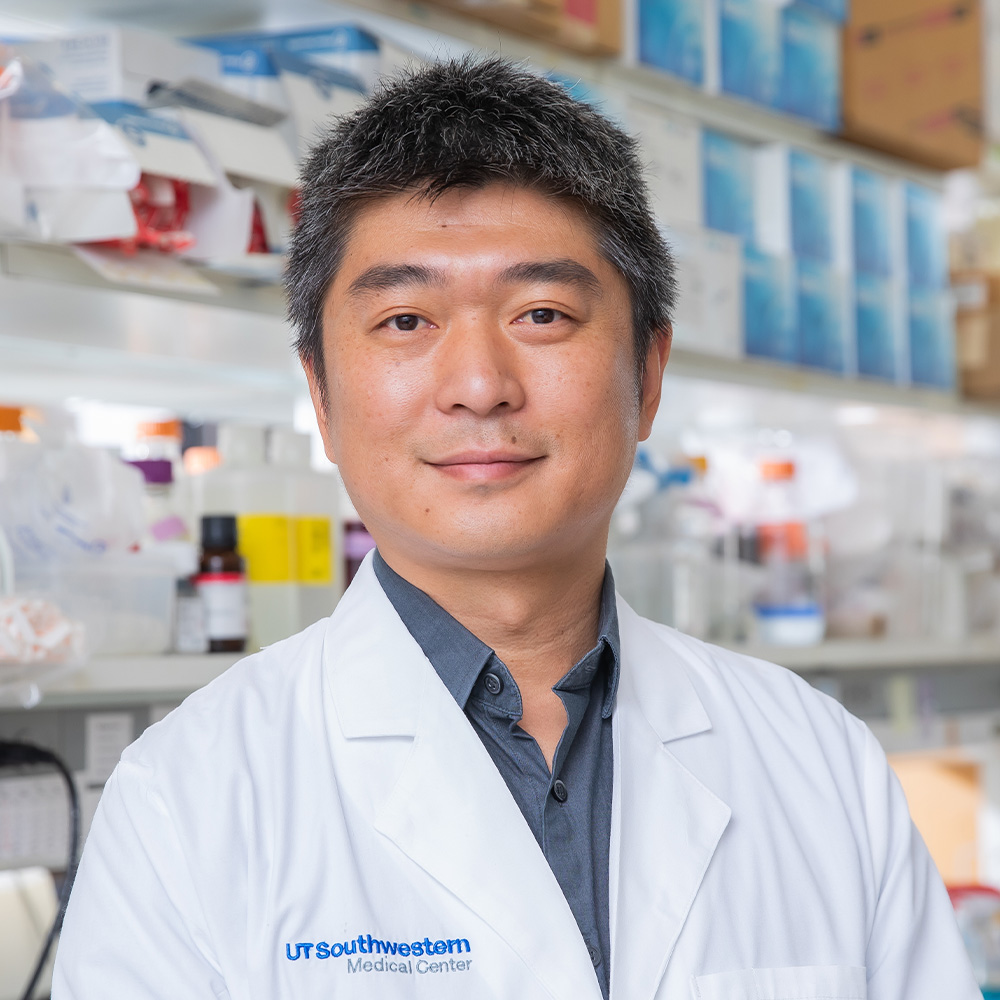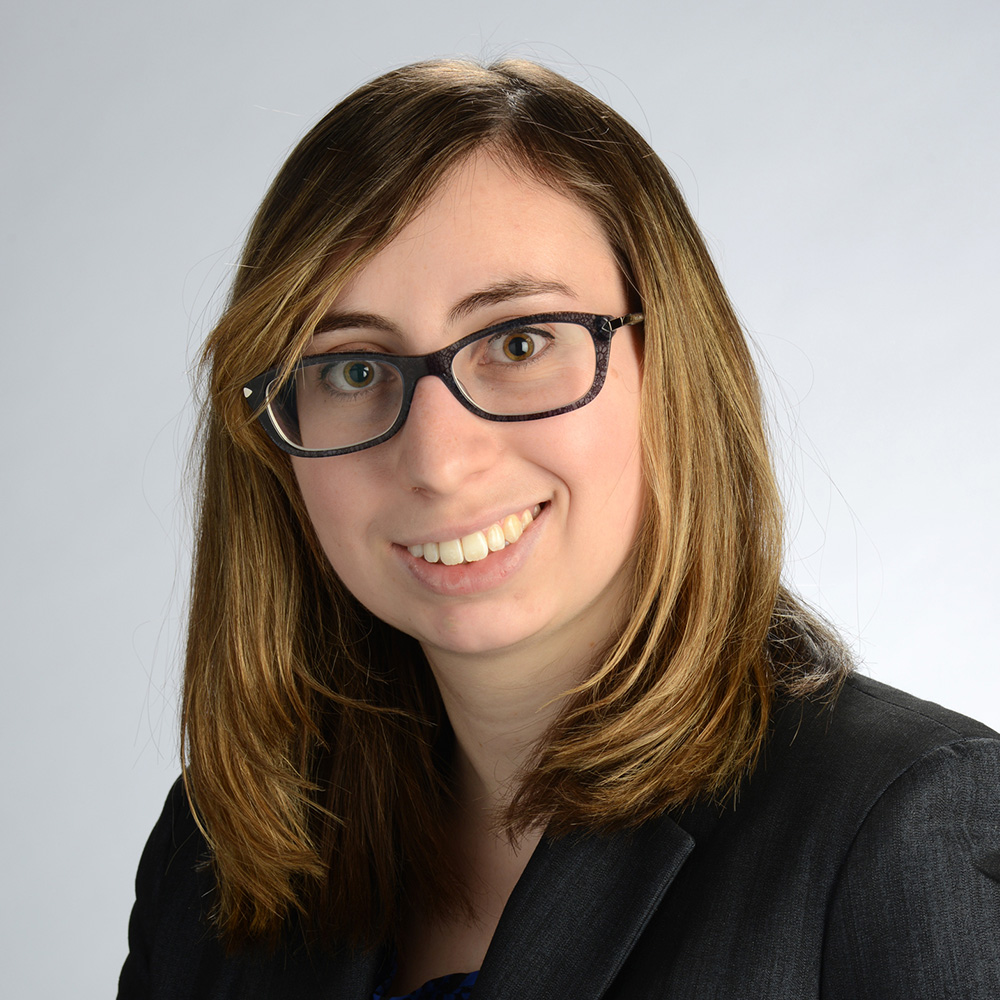Discovery clears hurdle in growing organs for transplants
UTSW study uses genetic modifications to get cells from different species to stick to one another


DALLAS – Sept. 23, 2024 – Genetically modifying cells from different species allows them to adhere to one another and grow together, UT Southwestern Medical Center researchers reported in a new study. Their findings, published in Cell Stem Cell, could bring researchers closer to generating human organs inside other animals, an advance that could help alleviate the worldwide shortage of donor organs for transplants.
“In this study, we have made substantial progress toward overcoming interspecies adhesion incompatibility, which is one of the major barriers preventing interspecies organogenesis,” said Jun Wu, Ph.D., Associate Professor of Molecular Biology at UT Southwestern. Dr. Wu co-led the study with first author Emily Ballard, Ph.D., a graduate student researcher in the Perot Family Scholars Medical Scientist Training Program and a member of the Wu Lab.
According to the U.S. Health Resources and Services Administration, more than 103,000 people nationwide are waiting for a life-saving organ transplant, and 17 people on that list die every day. To help combat this organ shortage, researchers have tried to “humanize” animal cells, genetically modifying them so that the organs they form bear human proteins on their cell surfaces to reduce the risk of transplant rejection. Although a few humanized animal organs have been transplanted into human patients, all have failed in a matter of weeks or months from rejection-related complications.

Ideally, Dr. Ballard explained, organs grown in animals for transplant would be made completely or mostly of human cells; however, accomplishing this feat would require overcoming several barriers. One is a lack of adhesion between the cells of different species. This adhesion, formed by sticky proteins called cell adhesion molecules (CAMs), is key to successful development of both an animal and its individual organs.
To better understand interspecies cell adhesion incompatibility, Dr. Wu, Dr. Ballard, and their colleagues co-cultured human stem cells with stem cells derived from other species and found that cells from the same species readily joined together through naturally occurring CAMs, but cells from different species rarely did.
Seeking a way to get cells from different species to adhere to one another, the researchers genetically modified human stem cells so that their surfaces bore small antibodies known as nanobodies. When cells expressing nanobodies encountered antigens they recognized on the surfaces of cells from another species, they latched together securely, allowing the cells to adhere without the use of CAMs.
Dr. Ballard – who recently completed her Ph.D. and is concurrently completing an M.D. at UTSW – notes that several more barriers must be overcome. However, the study’s findings bring this scenario closer to fruition.
Dr. Wu is a Virginia Murchison Linthicum Scholar in Medical Research and a New York Stem Cell Foundation – Robertson Stem Cell Investigator.
Other UTSW researchers who contributed to this study include Masahiro Sakurai, Ph.D., Assistant Instructor; Lizhong Liu, Ph.D., Assistant Instructor of Molecular Biology; and postdoctoral researchers Seiya Oura, Ph.D., and Jia Huang, Ph.D.
This study was funded by the New York Stem Cell Foundation, a Discovery and Innovation Grant from the American Society for Reproductive Medicine Research Institute, the UTSW High Risk High Impact award, and The Welch Foundation (I-2088).
Dr. Wu is a member of the Cell Stem Cell advisory board.
About UT Southwestern Medical Center
UT Southwestern, one of the nation’s premier academic medical centers, integrates pioneering biomedical research with exceptional clinical care and education. The institution’s faculty members have received six Nobel Prizes and include 25 members of the National Academy of Sciences, 22 members of the National Academy of Medicine, and 14 Howard Hughes Medical Institute Investigators. The full-time faculty of more than 3,200 is responsible for groundbreaking medical advances and is committed to translating science-driven research quickly to new clinical treatments. UT Southwestern physicians provide care in more than 80 specialties to more than 120,000 hospitalized patients, more than 360,000 emergency room cases, and oversee nearly 5 million outpatient visits a year.
